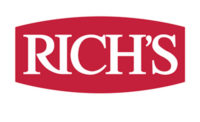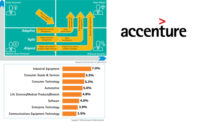Starbucks' 'Relentless Focus on Innovation'
Starbucks CEO Howard Schultz will announce that big "back-to-the-future" change -- along with several others -- at today's annual meeting in Seattle.
Think of this as a hobbling Starbucks' annual checkup.
Schultz -- acting as both doctor and patient -- will try to convince shareholders that he can fix what ails the chain. In an exclusive interview with USA TODAY, he made clear that a key first step is grinding beans for brewed coffee, reversing the switch to sealed bags of preground coffee that barely got time to breathe before use.
That is just for starters.
"Starbucks is going back to the future -- but that's not enough," says Schultz. "There will be a relentless focus on innovation."
The world's largest coffee shop chain is looking to its core coffee roots to lure back key customers going elsewhere for their coffee fix.
"There will be a fundamental change in the taste and experience of going to Starbucks," Schultz says. He returned as CEO eleven weeks ago and has pointed to this meeting as the moment he would begin to offer substantial details of his revival plan.
Unlike many CEOs these days, Schultz is not blaming the economy for his troubles. "The problems we are facing have been self-induced. That's why I think we'll be able to fix them."
Wall Street will be listening closely, as will Starbucks fans and detractors. Schultz says upcoming changes -- some to be announced today -- will include new ways to make and sell coffee, new products and redesigned stores.
"We're going to elevate the experience to new heights and new levels, the likes of which Starbucks customers have never seen before," Schultz says.
Clearly, many consumers seem to have lost their love for Starbucks. For the first time, the company suffered a 3% drop in transactions in its first fiscal 2008 quarter ended Dec. 30. Its stock has plummeted about 54% since a high of $39.63 in May 2006. Heads have rolled -- including that of former CEO Jim Donald, who was replaced by Shultz in a reprise of the CEO role he formerly held. Plus, the chain is shutting 100 of its domestic locations.
To be sure, Starbucks is hurting only by Starbucks standards. More than 45 million customers worldwide buy something from Starbucks every week. Its stock has appreciated almost 2,400% since it was listed in 1992, vs. 269% for the Nasdaq.
However, in a sign of lost luster, Starbucks suffered the indignity last year of being beaten by McDonald's coffee in a Consumer Reports ranking.
Do not think that report did not make Schultz see red. Among his plans: Starbucks coffee will be made in smaller batches, and permitted holding time will be cut.
"We'll spill out more coffee than most coffee shops sell," he says. "You won't be able to find a fresher cup of coffee on the planet."
While Schultz has strongly held ideas on fixing Starbucks, so do 10 restaurant industry consultants contacted by USA TODAY.
For one thing, they say Starbucks cannot return to the good old days -- even if Schultz wants to.
"Much has changed in the past 20 years," warns Harvey Hartman, a corporate consultant. "Starbucks cannot return to foggy memories of halcyon days gone by."
Schultz says that is not his aim. While he will restore the focus on coffee, "This is the beginning of transforming the Starbucks experience."
Here are changes experts recommend and Schultz's responses:
*Smell good again. "A cafe should smell of fresh, ground coffee. It's a powerful emotional trigger," says Malcolm Knapp, a restaurant consultant.
Schultz has this one on the way. By mid-August, coffee again will be ground and scooped at Starbucks' 7,100 company-owned U.S. stores. Some 50 stores already are.
No decision has been made on the 4,000 U.S. franchise locations or its 4,588 international stores.
The chain stopped grinding and went to preground beans a decade ago to cut lines and speed sales. "That turned out to be our Achilles' heel," Schultz says. "At the time, it was the right decision, but we probably waited too long to make this adjustment."
*Embrace wired youth. "E-mail is out, Facebook is in," notes Christopher Muller, director of the Center for Multi-Unit Restaurant Management at Orlando's University of Central Florida. "Starbucks should take a page from Apple and move to a post-Internet mindset and toward social networking."
Starbucks coffee houses are a real-world mash-up of Facebook, YouTube and LinkedIn, adds Jeff DeGraff, a consultant. "Starbucks should observe these groups to learn what products and services they're willing to purchase."
Social networking could create "a deeper emotional connection" with its customers, says Kevin Higar, a consultant at Technomic.
Schultz says social networking will be addressed, perhaps as early as today, but offered no details.
*Reward loyalty. Starbucks could build "customer engagement" with a creative loyalty program, says Technomic's Higar. It should have one with a twist -- and cutting-edge technology, he says.
Schultz says he will talk about such a program today.
*Sell unique coffees. Starbucks needs more coffee drinks that are not available elsewhere, says consultant Bob Sandelman.
Schultz says he is working on just that. In "the next 18 months, we'll bring in more innovation than over the past five years."
He says the company is having success in Boston and Seattle testing a premium coffee that sells for $2.50 per cup, about a buck more than a similar cup of the regular drip coffee. "We're going to go up in experience -- not down," he says.
The premium brew is from a new vacuum-press machine called Clover that makes cups of joe one at a time. "It makes the highest-quality brewed cup of coffee that I've ever tasted," Schultz claims.
*Get healthier. "For anyone who has taken the time to actually look up the calorie counts of these luscious coffee creations, a moment of shock surely follows," says Linda Lipsky, a restaurant consultant.
Schultz says more better-for-you items will roll out this year. "We've honed in on health and wellness as the place we want to go."
*Drop foods that do not jibe with java. Many heated foods hide the coffee aroma and detract from ambience, Sandelman says.
Schultz already has said he is killing the ballyhooed breakfast sandwiches and says he has not ruled out dropping more foods.
*Sell energy drinks. Starbucks needs to offer energy drinks that are hot with young patrons, suggests Muller.
Schultz says, "We're entering the energy category," but he declined to be more specific.
*Cut the clutter. Customers do not know if they are in a "coffee shop or variety store" Knapp says.
Schultz agrees. Stores will have "fewer things" that are "more focused on elevating the coffee experience at home." He adds that store redesigns are coming in 2009.
*Revive "coffee theater." Starbucks needs to refocus on the "mystique" of its coffee, says consultant Dennis Lombardi. Recent retraining of baristas is a start, he says, but more needs to be done.
Schultz says the retraining, when Starbucks closed for three hours on Feb. 26, involved 150,000 workers. More training may be on tap.
*Open fewer stores. Starbucks is beyond the saturation point in some markets, says Ron Santibanez, a restaurant consultant. "It has become a joke in some consumers' minds that you can find a Starbucks on every corner."
The market "can no longer support" unchecked expansion, agrees Ron Paul, president of Technomic.
Schultz has said that he will cut the number of U.S. stores opening in fiscal 2008 to 1,175 from the 1,600 planned. However, he will increase international openings by 75 to 975.
*Sell combo meals. Since consumers often complain about value at Starbucks, Lipsky proposes a "Starbucks Valuebucks Combo" that would give folks who buy food and a beverage a price break.
However, Schultz, who just axed a test of dollar cups of coffee in Seattle, gave this a cold shoulder. "We're not in the fast-food business."
*Give coffee away. What if the chain were actually to give away a basic, drip coffee -- next to a collection jar for a local charity?
"Imagine the possibilities," Hartman says. "Given that most customers are spending far more on pricier lattes, food and treats." It would make Starbucks look saintly and put buck-a-cup deals from the likes of Dunkin' Donuts or McDonald's in their place, he says.
Sorry, Schultz says. "That's not appropriate for us."
*Chill. Even with all the pressures from disappointed investors, customers and suppliers, it may be time for Starbucks to take a deep breath -- and chill. "They have to stop taking themselves so seriously," says Katie Paine, a corporate image consultant. "Let's face it -- it's still coffee, not brain surgery."
Try telling Schultz that.
"People will be quite surprised" by all the changes on tap for Starbucks, he says. "This is just the beginning."
From the March 31, 2008, Prepared Foods e-Flash
Looking for a reprint of this article?
From high-res PDFs to custom plaques, order your copy today!






